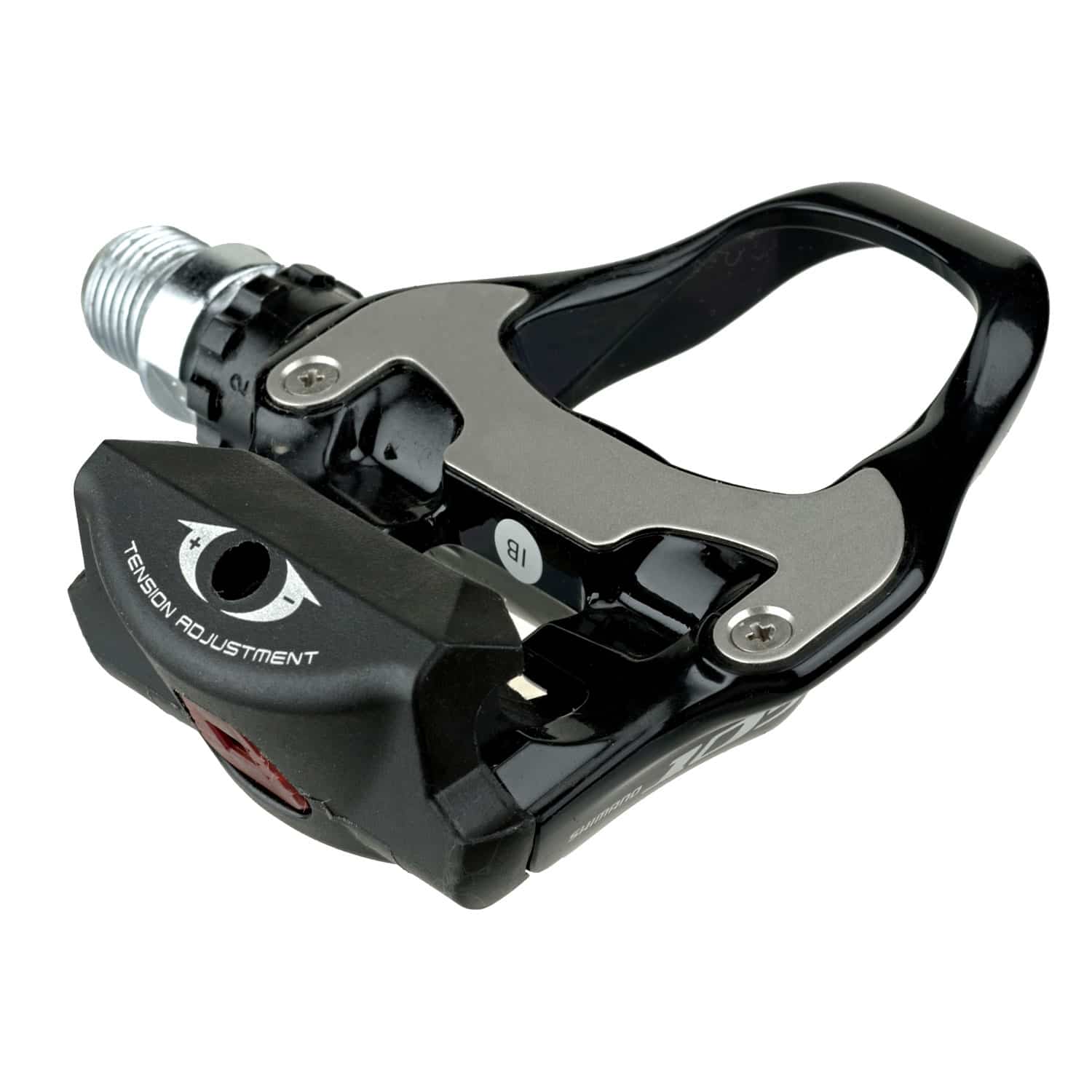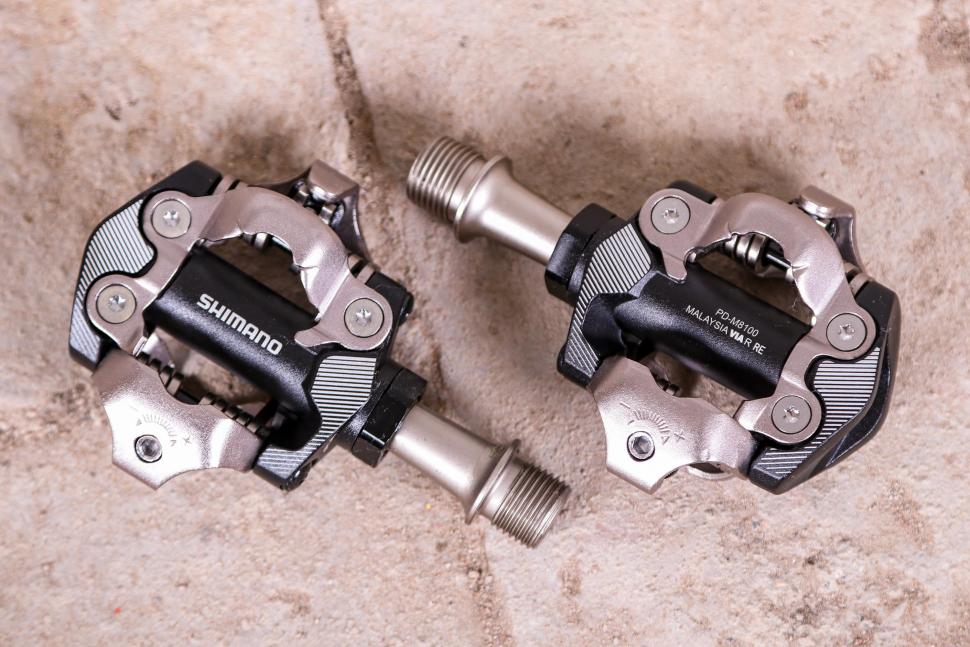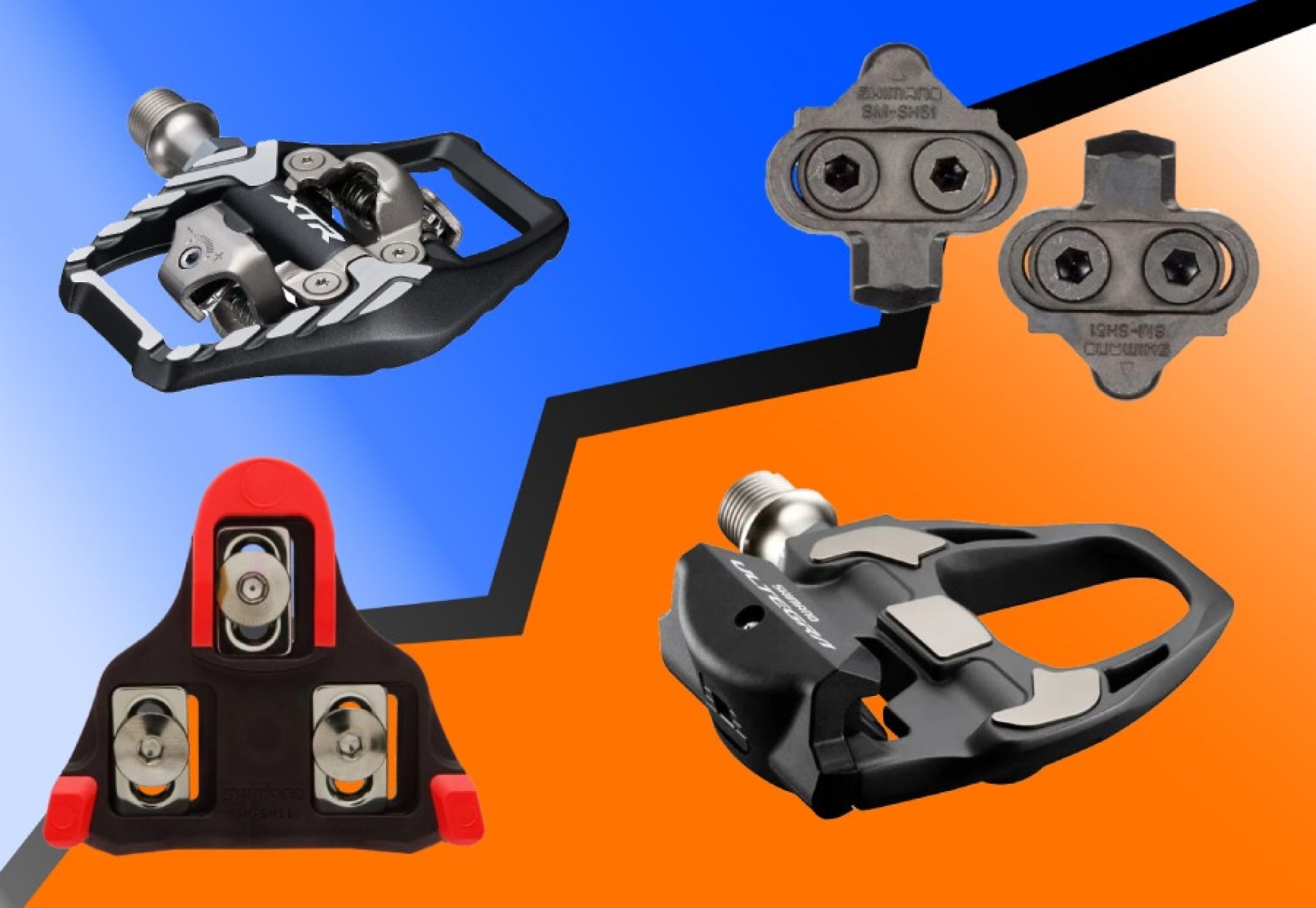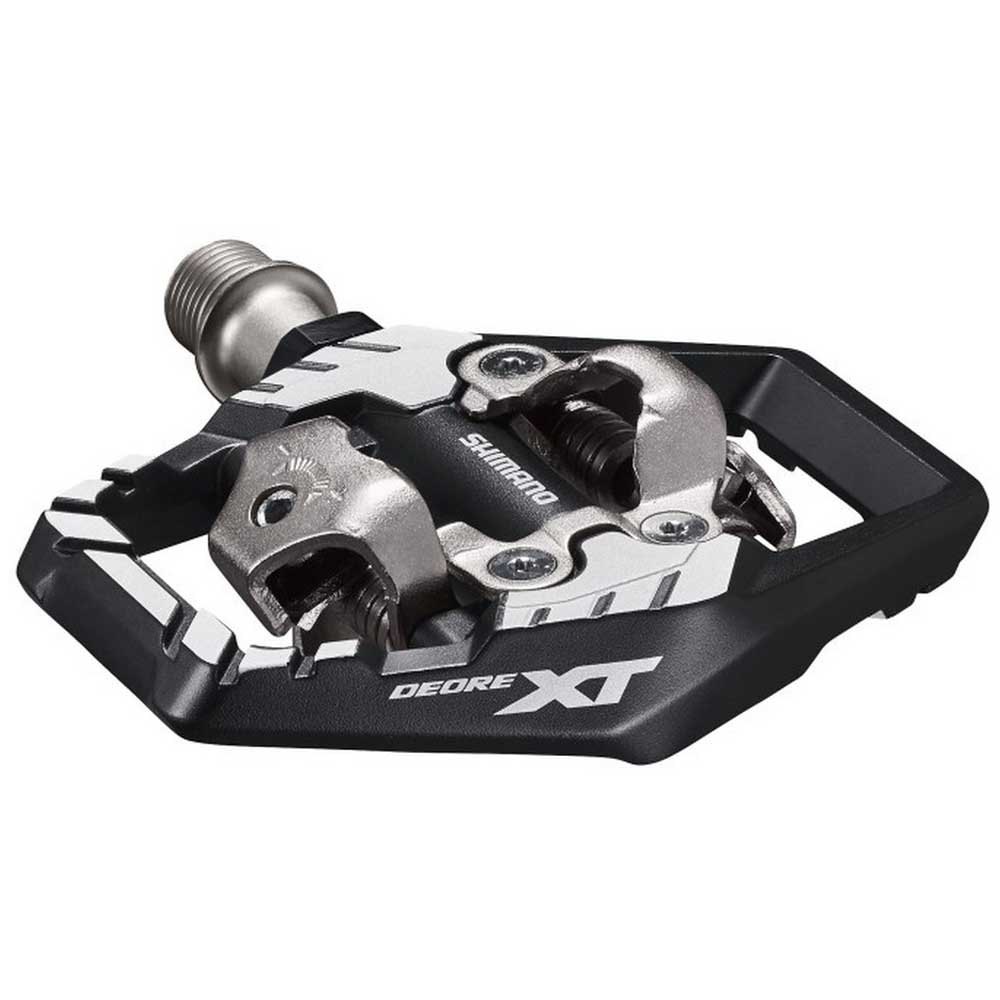Unveiling the Best Shimano SPD Pedals for Your Cycling Adventures
Shimano, a renowned name in the cycling industry, has been delivering high-quality components for bicycles for several decades. Among its diverse product range, Shimano’s SPD (Shimano Pedaling Dynamics) system has gained significant popularity among cycling enthusiasts. These pedals, designed for various types of cycling, offer unparalleled performance and comfort, making them a preferred choice for many riders. Selecting the right Shimano SPD pedals can significantly enhance your cycling experience, whether you are a seasoned cyclist or a beginner.
Decoding Shimano SPD Pedal Types: Which One Suits Your Riding Style?
Shimano offers a diverse range of SPD pedals, each designed with unique features and advantages to cater to various cycling needs. Here, we break down some of the most popular Shimano SPD pedal types, helping you identify the most suitable option for your cycling style:
PD-M324:
These pedals are a versatile choice for cyclists who engage in both on- and off-road cycling. Featuring a dual-sided design, the PD-M324 pedals combine the convenience of a clipless pedal with the functionality of a platform pedal. The adjustable tension allows for easy entry and release, making them an excellent choice for beginners or casual riders.
PD-M520:
The PD-M520 pedals are a popular choice among mountain bikers due to their robust construction and reliable performance. With a durable stainless-steel body and adjustable tension, these pedals offer excellent power transfer and mud-shedding capabilities. The PD-M520 pedals are ideal for cross-country and trail riding, providing a balance between performance and affordability.
PD-M8020:
Designed for enduro and downhill mountain biking, the PD-M8020 pedals offer superior grip and durability. Featuring a wide, concave platform and adjustable pins, these pedals provide excellent traction and support, even in challenging terrains. The PD-M8020 pedals also boast a mud-clearing design and sealed bearings for long-lasting performance.
PD-M8000:
These pedals are designed for high-performance road cycling, offering a lightweight and aerodynamic design. The PD-M8000 pedals feature a large, stable binding area and adjustable tension, ensuring efficient power transfer and secure engagement. The low-profile design reduces the risk of rock strikes, making them suitable for various road cycling disciplines.
PD-R550:
The PD-R550 pedals are a budget-friendly option for road cyclists seeking a clipless pedal system. These pedals offer a lightweight and durable design, with a large, stable binding area and adjustable tension. The PD-R550 pedals are suitable for recreational and entry-level road cycling, providing a balance between affordability and performance.
How to Install Shimano SPD Pedals: A Comprehensive Guide
Installing Shimano SPD pedals on your bicycle is a straightforward process that can be accomplished with a few basic tools. Follow these steps to ensure a smooth and secure installation:
Tools Required:
To install Shimano SPD pedals, you will need:
- A pedal wrench or adjustable wrench
- Grease or a waterproof lubricant
Preparation:
Before installing your Shimano SPD pedals, apply a thin layer of grease or waterproof lubricant to the pedal threads to prevent seizing and ensure easy removal in the future. Be sure to apply grease to both the pedal and the crank arm threads.
Installation Process:
- Position the pedal in the crank arm so that the threads align correctly. The left pedal has a reverse thread, meaning it should be turned clockwise to tighten, while the right pedal follows the standard righty-tighty rule.
- Using your pedal wrench or adjustable wrench, slowly turn the pedal to engage the threads. Do not force the pedal, as this may cause damage to the threads or crank arm.
- Once the pedal is engaged, continue to tighten it securely. A general guideline is to tighten the pedal until it is “finger-tight” plus one additional turn with the wrench. This ensures a secure installation without overtightening, which could potentially strip the threads.
- Repeat the process for the opposite pedal, ensuring that you use the correct pedal for each crank arm (left pedal for the left crank arm and right pedal for the right crank arm).
Helpful Tips and Precautions:
- Always double-check that you are installing the correct pedal on the corresponding crank arm.
- Use a torque wrench if available, following the manufacturer’s recommended torque specifications for your specific bicycle and pedal model.
- Periodically check your pedals for tightness and re-tighten if necessary, especially if you frequently remove your pedals for transportation or storage.
Maintaining Your Shimano SPD Pedals: Top Tips for a Long-Lasting Performance
Regular maintenance of your Shimano SPD pedals is crucial for ensuring optimal performance, longevity, and safety. By following these expert tips and best practices, you can keep your pedals in pristine condition and maximize their lifespan:
Cleaning:
- Remove the pedals from the crank arms using a pedal wrench or adjustable wrench.
- Use a soft-bristled brush, warm water, and mild dish soap to gently scrub away dirt, debris, and grime from the pedal body and cleats.
- Rinse the pedals thoroughly with clean water and dry them completely with a soft cloth to prevent rust formation.
Lubrication:
- Apply a high-quality waterproof grease or lubricant to the pedal spindle and bearing surfaces, ensuring even coverage.
- Re-install the pedals onto the crank arms, tightening them securely with a torque wrench or pedal wrench.
Adjustments:
- Regularly check the tension of your Shimano SPD pedals and adjust as necessary. Overly tight cleats may cause discomfort or difficulty clipping in and out, while loose cleats may lead to accidental release during riding.
- Adjust the cleat position to optimize your foot alignment and pedaling efficiency. A neutral cleat position typically places the pedal axle beneath the ball of the foot, promoting a balanced and natural foot alignment.
Additional Maintenance Tips:
- Inspect your pedals and cleats for signs of wear and tear, replacing them as needed.
- Periodically check the pedal threads for tightness and re-tighten if necessary.
- Store your bicycle in a dry, clean environment to minimize exposure to moisture and contaminants.
Comparing Shimano SPD Pedals with Competitor Brands: A Detailed Review
When selecting SPD pedals for your cycling needs, it is essential to compare Shimano’s offerings with those of other reputable brands. Here, we analyze the unique features, advantages, and disadvantages of Look, Time, and Speedplay, helping you make an informed decision:
Look:
- Look pedals are known for their innovative design and high-quality construction. Their Keo series offers various models catering to different cycling disciplines and budgets.
- Look pedals typically feature a larger platform than Shimano SPD pedals, providing increased stability and power transfer. However, this may result in a slightly heavier pedal system.
- Look cleats are generally easier to walk in than Shimano SPD cleats, thanks to their wider and more durable design. However, this may come at the cost of increased pedal-to-shoe connection tension.
Time:
- Time pedals are renowned for their smooth and reliable engagement mechanism, which is often preferred by professional cyclists. The XPro and Iclic series are popular choices among cycling enthusiasts.
- Time pedals typically offer a more extensive range of adjustability than Shimano SPD pedals, allowing for a more personalized fit and feel. However, this may result in a more complex setup process.
- Time cleats are designed to provide a secure and stable connection to the pedal, but they may not be as easy to walk in as Shimano SPD cleats. Additionally, Time cleats tend to wear out faster than Shimano SPD cleats, requiring more frequent replacements.
Speedplay:
- Speedplay pedals are known for their unique and innovative design, offering a low stack height and excellent cornering clearance. The Zero and Light Action series are popular options among cyclists.
- Speedplay pedals provide a dual-sided entry mechanism, making it easier to clip in and out during riding. However, this may lead to increased pedal weight compared to Shimano SPD pedals.
- Speedplay cleats offer a high degree of float and adjustability, allowing for a more natural and comfortable foot alignment. However, Speedplay cleats may require more frequent maintenance and replacement due to their exposed design.
Shimano SPD Pedals vs. Flat Pedals: Which Option Reigns Supreme?
Choosing between Shimano SPD pedals and flat pedals can be a challenging decision for cyclists, as each option offers unique advantages and disadvantages. Understanding the differences between the two and determining which pedal type is best suited for your cycling style and preferences is crucial. Here, we compare Shimano SPD pedals with flat pedals to help you make an informed decision:
Shimano SPD Pedals:
- Shimano SPD pedals provide a secure and stable connection between the shoe and the pedal, enhancing power transfer and pedaling efficiency.
- SPD pedals are ideal for various cycling disciplines, including mountain biking, touring, and commuting, where a reliable and efficient pedal system is essential.
- Shimano SPD pedals require the use of specific cycling shoes with cleats, which may not be as comfortable or walkable as regular shoes.
- SPD pedals may take some time to get used to, as clipping in and out requires practice and coordination.
Flat Pedals:
- Flat pedals offer a simple and user-friendly design, allowing for easy entry and exit during riding.
- Flat pedals are suitable for various cycling disciplines, including downhill mountain biking, dirt jumping, and casual riding, where a more relaxed and flexible pedal system is preferred.
- Flat pedals do not provide the same level of power transfer and pedaling efficiency as Shimano SPD pedals, as they rely on shoe-to-pedal friction for engagement.
- Flat pedals may expose the rider’s feet to potential injuries in the event of a crash or impact, as they do not offer the same level of protection as SPD pedals.
Ultimately, the choice between Shimano SPD pedals and flat pedals depends on your personal preferences, cycling style, and the specific demands of your chosen discipline. By understanding the advantages and disadvantages of each option, you can make an informed decision and select the pedal type that best suits your needs.
Upgrading Your Shimano SPD Pedals: When and How to Make the Switch
As a cyclist, you may find yourself in a situation where upgrading your Shimano SPD pedals becomes necessary due to wear and tear, performance issues, or changes in your riding style. Here, we discuss the factors that may indicate the need for an SPD pedal upgrade and share advice on how to choose the right upgrade option and smoothly transition to the new pedals, ensuring a seamless and enjoyable cycling experience:
Factors Indicating the Need for an Upgrade:
- Wear and Tear: Over time, your SPD pedals may show signs of wear, such as reduced tension, worn-out cleats, or damaged bearings. Upgrading to a newer model can help restore optimal performance and extend the lifespan of your pedals.
- Performance Issues: If you are experiencing performance issues, such as difficulty clipping in or out, reduced power transfer, or decreased stability, an upgrade may be necessary to address these concerns and improve your overall cycling experience.
- Changes in Riding Style: As your cycling style or discipline evolves, your current SPD pedals may no longer meet your needs. Upgrading to a pedal type better suited for your new riding style can help enhance performance and comfort.
Choosing the Right Upgrade Option:
- Consider your cycling discipline and riding style when selecting a new SPD pedal. For example, if you are a mountain biker, you may want to choose a pedal with increased mud-shedding capabilities and a more robust design. If you are a road cyclist, you may prefer a lightweight and aerodynamic pedal with a larger binding surface.
- Research the latest Shimano SPD pedal models and their unique features, advantages, and disadvantages. Compare them with your current pedals and determine which model best suits your needs and budget.
- Consult with fellow cyclists, bike shops, or online forums for advice and recommendations on SPD pedal upgrades. Their experiences and insights can help guide your decision-making process.
Smoothly Transitioning to New Pedals:
- Practice clipping in and out with your new SPD pedals before embarking on long rides or challenging terrains. This will help you become familiar with the new pedals and reduce the risk of accidents or injuries.
- Gradually increase your usage of the new pedals, allowing your body to adapt to the new pedaling dynamics and any changes in foot alignment or positioning.
- Maintain your new SPD pedals regularly, following the manufacturer’s recommendations for cleaning, lubrication, and adjustments. Proper maintenance can help ensure optimal performance, longevity, and safety.
Frequently Asked Questions about Shimano SPD Pedals: Your Top Queries Answered
In this section, we address common questions and concerns related to Shimano SPD pedals, providing clear and concise answers to help readers better understand and utilize their SPD pedals, ensuring a safe and enjoyable cycling experience:
Q: What is the difference between Shimano SPD and regular pedals?
A: Shimano SPD pedals, also known as clipless pedals, feature a mechanism that securely connects the rider’s shoe to the pedal, providing increased power transfer, stability, and efficiency. Regular pedals, on the other hand, do not have this mechanism and rely on shoe-to-pedal friction for engagement.
Q: How do I adjust the tension on my Shimano SPD pedals?
A: To adjust the tension on your Shimano SPD pedals, locate the tension adjustment screw on the back of the pedal and use a 3mm or 4mm Allen wrench to turn the screw clockwise to increase tension or counterclockwise to decrease tension. Always follow the manufacturer’s recommendations for tension settings to ensure optimal performance and safety.
Q: How often should I clean and maintain my Shimano SPD pedals?
A: Regular cleaning and maintenance of your Shimano SPD pedals can help ensure optimal performance, longevity, and safety. We recommend cleaning your pedals after every ride, especially in muddy or wet conditions. Perform a thorough maintenance check, including cleaning, lubrication, and adjustments, at least once a month or as needed.
Q: Can I use Shimano SPD pedals with any type of shoe?
A: Shimano SPD pedals require the use of specific cycling shoes with cleats. These shoes are designed to work seamlessly with SPD pedals, providing a secure and efficient pedaling experience. While some casual or hybrid shoes may be compatible with SPD pedals, we recommend using dedicated cycling shoes for the best results.
Q: How do I know when it’s time to replace my Shimano SPD pedals?
A: Signs that it may be time to replace your Shimano SPD pedals include reduced tension, worn-out cleats, damaged bearings, or difficulty clipping in and out. If you notice any of these issues, consider upgrading to a new pair of SPD pedals to ensure optimal performance and safety.







